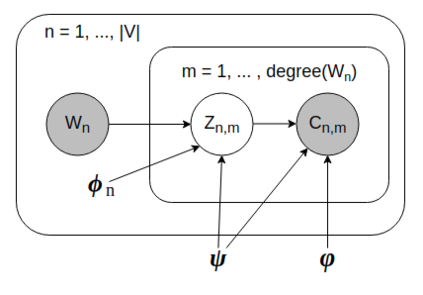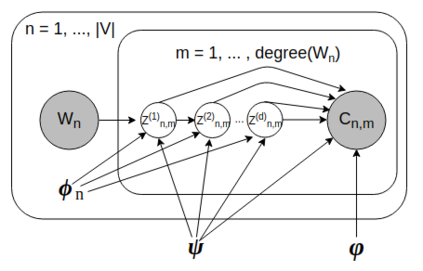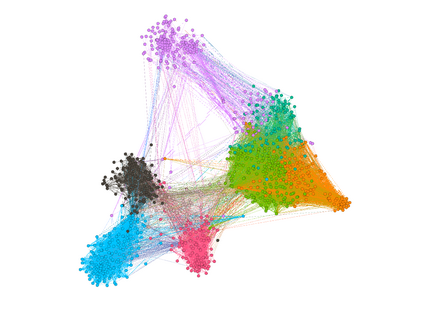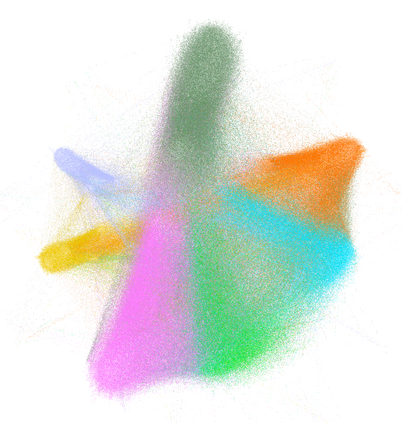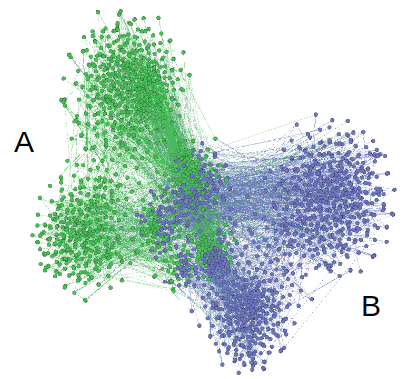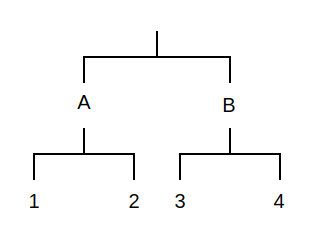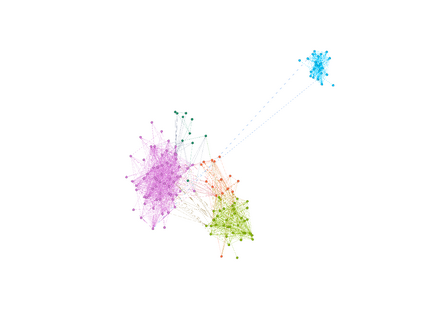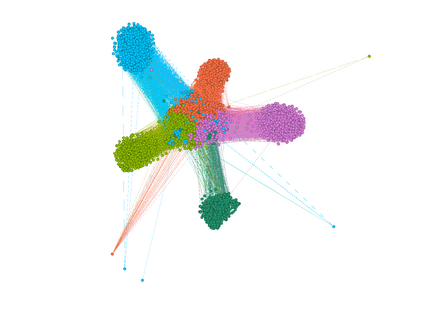This paper focuses on two fundamental tasks of graph analysis: community detection and node representation learning, which capture the global and local structures of graphs, respectively. In the current literature, these two tasks are usually independently studied while they are actually highly correlated. We propose a probabilistic generative model called vGraph to learn community membership and node representation collaboratively. Specifically, we assume that each node can be represented as a mixture of communities, and each community is defined as a multinomial distribution over nodes. Both the mixing coefficients and the community distribution are parameterized by the low-dimensional representations of the nodes and communities. We designed an effective variational inference algorithm which regularizes the community membership of neighboring nodes to be similar in the latent space. Experimental results on multiple real-world graphs show that vGraph is very effective in both community detection and node representation learning, outperforming many competitive baselines in both tasks. We show that the framework of vGraph is quite flexible and can be easily extended to detect hierarchical communities.
翻译:本文侧重于图形分析的两项基本任务:社区探测和节点代表学习,分别反映全球和当地图表结构。在目前的文献中,这两个任务通常在实际高度关联的情况下独立研究。我们提出了一个称为 vGraph 的概率基因模型,以学习社区成员资格和节点代表合作。具体地说,我们假设每个节点可以作为社区混合体来代表,每个社区被定义为对节点的多名分布。混合系数和社区分布都以节点和社区的低维度表示为参数。我们设计了一种有效的变异推论算法,使邻近节点的社区成员在潜在空间具有相似性。多个现实世界图的实验结果显示, vGraph 在社区探测和节点代表学习中都非常有效,在两个任务中都比许多竞争性基线都好。我们显示, vgraph 的框架非常灵活,并且很容易扩展,以探测等级社区。

